Abstract
Thin unmounted cortical tissue sections from winter twigs of the mulberry tree were held with a thin forceps and rapidly immersed in liquid nitrogen from room temperatures without prefreezing. They were rewarmed; rapidly in water at 10° to 40°, or slowly, in air at room temperatures. In those sections rapidly rewarmed, all survived. None survived in those sections rewarmed slowly in air.
Tissue sections mounted between coverglasses with water were extracellulary prefrozen at the temperatures low enough to dehydrate almost all of the freezable water in cells. These sufficiently prefrozen cells could survive immersion in liquid nitrogen, and the survival value was very little affected by the rates of cooling to and rewarming from super-low temperatures. With insufficient prefreezing at higher temperatures, however, the rewarming process seriously influenced the survival value of cells frozen at super-low temperatures. Slow rewarming in air destroyed all of the cells, while rapid rewarming in water at 30° did not affect them. An abrupt decrease in the survival value in insufficiently prefrozen cells during rewarming was also observed at temperatures above approximately −50° following immersion in liquid nitrogen. Very little decrease in the survival value was observed in any of the cells that had been sufficiently prefrozen.
These results indicate that cells which are insufficiently prefrozen may contain freezable water which nucleates during rapid cooling in liquid nitrogen and then grows during the subsequent slow rewarming into ice masses which destroy the viability of the cells. Such fatal intracellular freezing rarely occurs in sufficiently prefrozen cells, irrespective of the rate of cooling to or rewarming from super-low temperatures.
Full text
PDF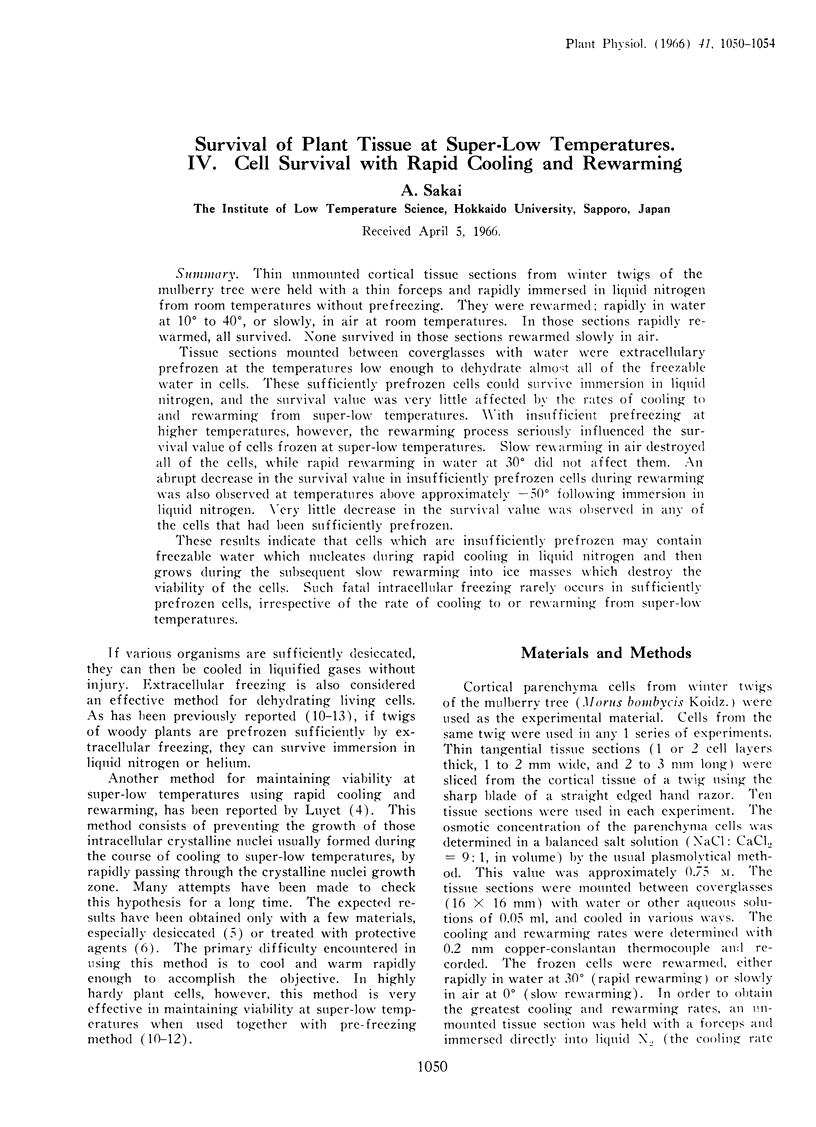
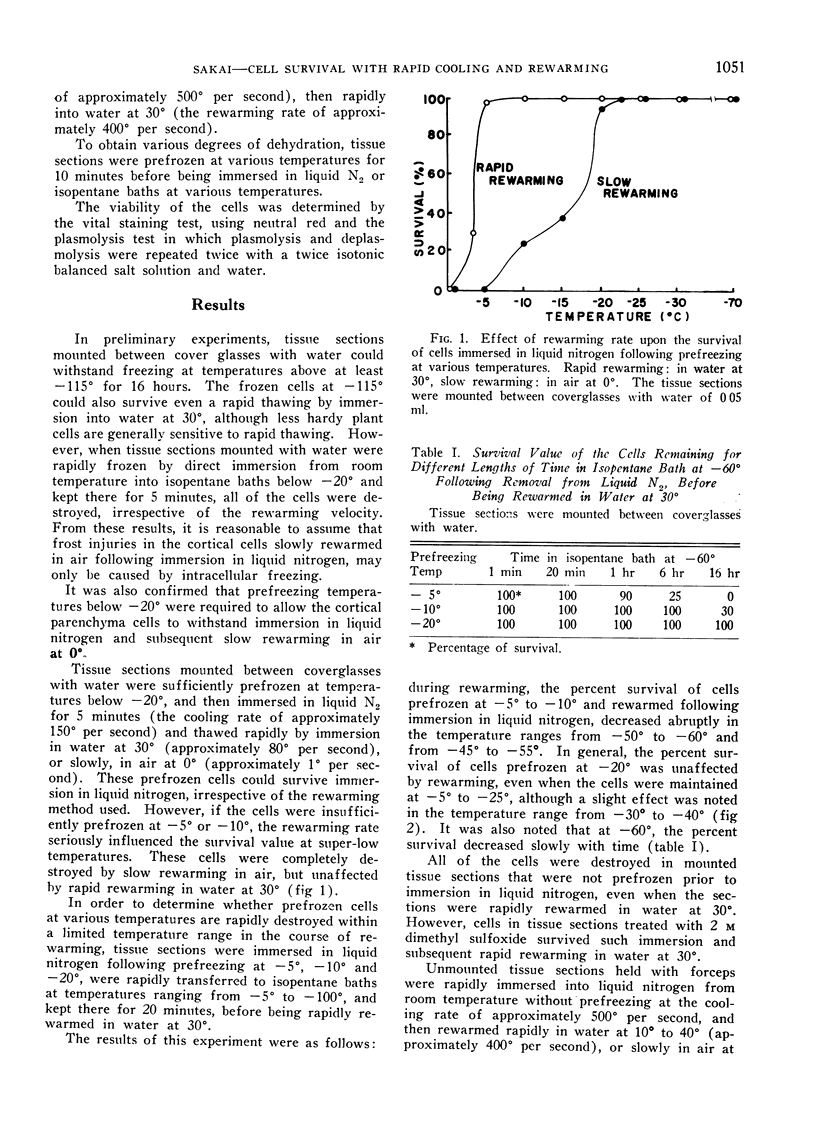
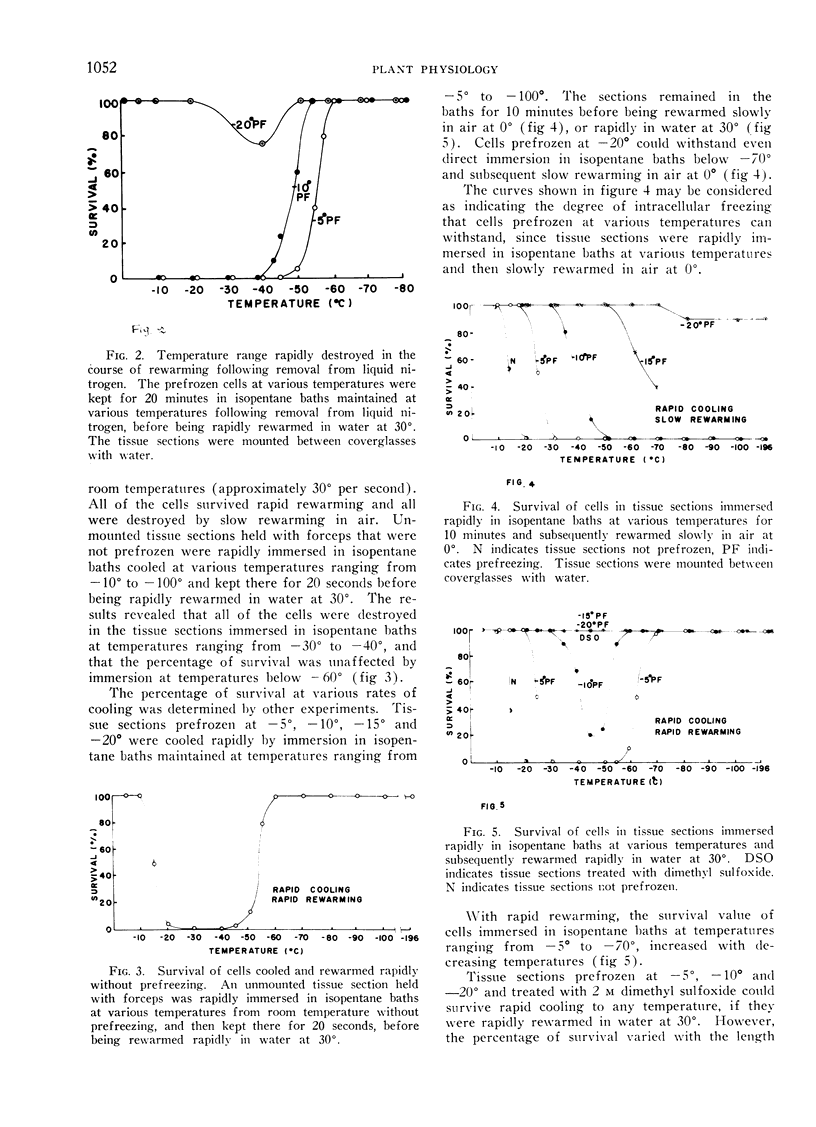
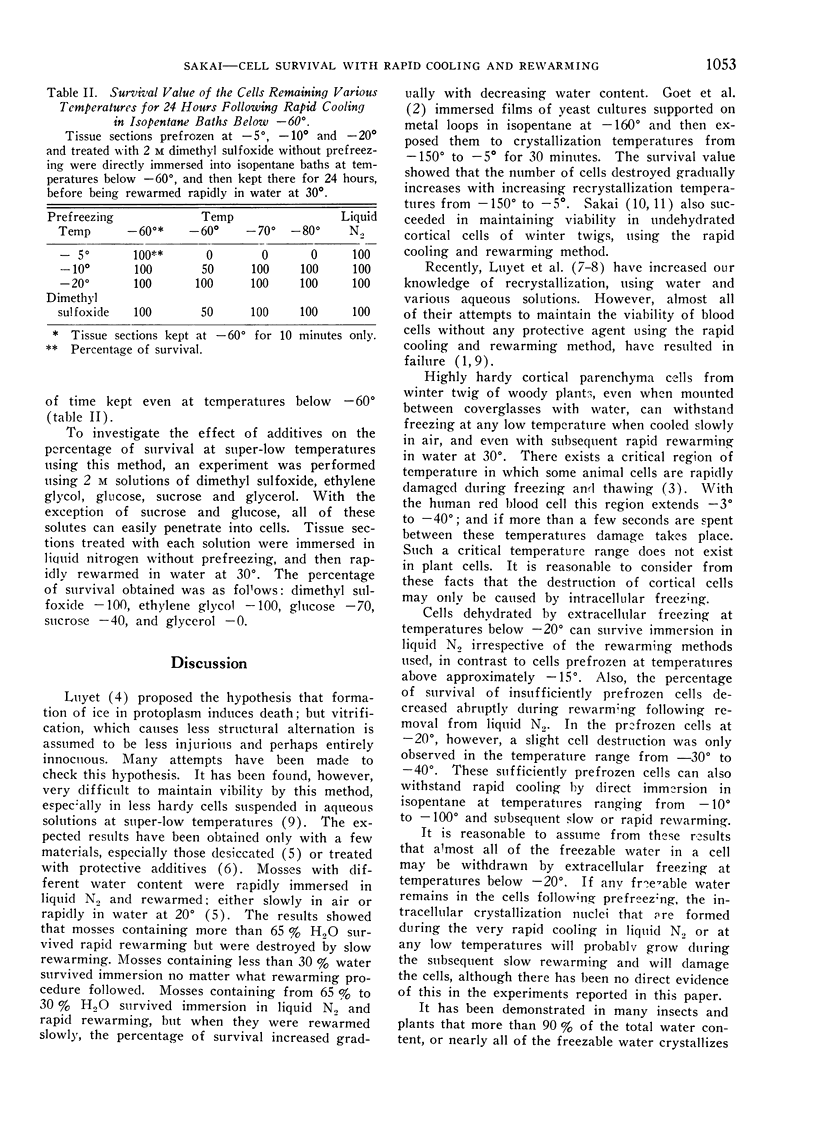
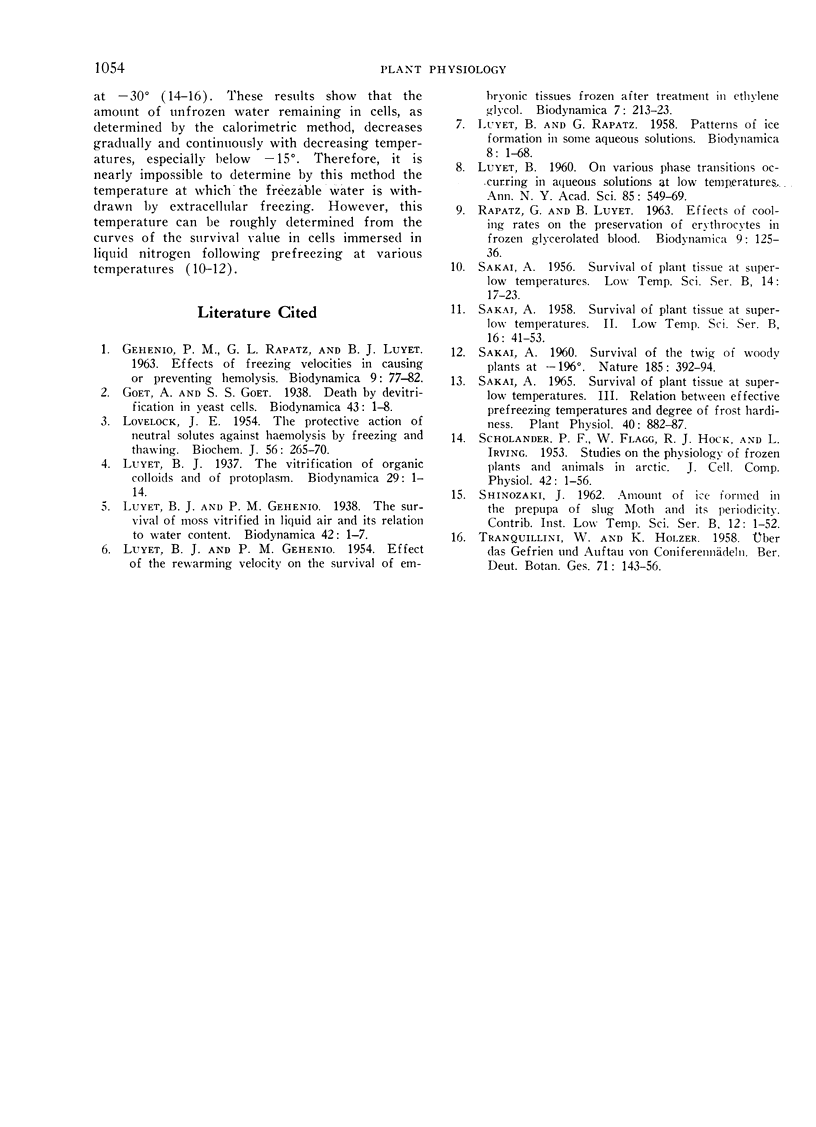
Selected References
These references are in PubMed. This may not be the complete list of references from this article.
- GEHENIO P. M., RAPATZ G. L., LUYET B. J. EFFECTS OF FREEZING VELOCITIES IN CAUSING OR PREVENTING HEMOLYSIS. Biodynamica. 1963 Oct;9:77–82. [PubMed] [Google Scholar]
- LOVELOCK J. E. The protective action of neutral solutes against haemolysis by freezing and thawing. Biochem J. 1954 Feb;56(2):265–270. doi: 10.1042/bj0560265. [DOI] [PMC free article] [PubMed] [Google Scholar]
- LUYET B. J., GEHENIO P. M. Effect of the rewarming velocity on the survival of embryonic tissues frozen after treatment in ethylene glycol. Biodynamica. 1954 Dec;7(145-148):213–223. [PubMed] [Google Scholar]
- LUYET B. On various phase transitions occurring in aqueous solution at low temperatures. Ann N Y Acad Sci. 1960 Apr 13;85:549–569. doi: 10.1111/j.1749-6632.1960.tb49982.x. [DOI] [PubMed] [Google Scholar]
- RAPATZ G., LUYET B. EFFECTS OF COOLING RATES ON THE PRESERVATION OF ERYTHROCYTES IN FROZEN GLYCEROLATED BLOOD. Biodynamica. 1963 Oct;9:125–136. [PubMed] [Google Scholar]
- SCHOLANDER P. F., FLAGG W., HOCK R. J., IRVING L. Studies on the physiology of frozen plants and animals in the Arctic. J Cell Physiol Suppl. 1953 Sep 1;42(Suppl):1–56. doi: 10.1159/000054843. [DOI] [PubMed] [Google Scholar]
- Sakai A. Survival of Plant Tissue at Super-Low Temperature III. Relation between Effective Prefreezing Temperatures and the Degree of Front Hardiness. Plant Physiol. 1965 Sep;40(5):882–887. doi: 10.1104/pp.40.5.882. [DOI] [PMC free article] [PubMed] [Google Scholar]


